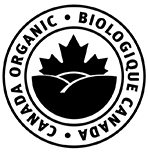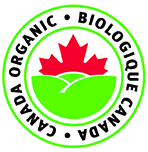13 Labelling and Packaging Requirements
Michael Hrycay
Learning Objectives
Give examples of labelling, and packaging requirements for quality inspections.
Labelling Requirements
There are many labelling requirements, often depending on the type of product, ingredients, claims (such as ‘nut free’), and market. Here are some examples of core labelling requirements.
-
Date Markings
The food and drugs regulations require prepackaged products with a durable life of 90 days or less to be labelled with date markings and storage instructions. For foods with a durable life greater than 90 days, date markings can be voluntary.
A durable life is the period of time where a product will retain its normal taste, look, safety, and nutritional value.
-
List of Ingredients
All prepackaged products with more than one ingredient must declare their ingredients and components in a list of ingredients. Ingredients must be declared in descending order of proportion by weight. Food allergen, gluten and added sulphites must be declared if they are not in the list of ingredients. Note: it is not required to declare food allergens or gluten that is present in a prepackaged product as a result of cross-contamination.
-
Food Additives
A food additive is a substance that changes the characteristic of a food. Some reasons for food additives are:
- Prevent clumping (anti-caking agents)
- Bleaching or coloring
- Improving texture (gelling, stabilizing or thickening)
- Improving the look (glazing and polishing)
- Sweetening
- Preserving
Only certain food additives can be used in certain foods. The CFIA regulates the use of food additives according to the FDR (Food and Drug Regulations.) Food additives must be included in the list of ingredients.
Product Claims
All aspects of food labels and advertisements are considered in the overall impression attributed to food products. Allergen-free, gluten-free and precautionary statements that appear on food labels or advertisements contribute toward this overall impression.
-
Gluten Free Claim
A gluten free claim is a statement that either states, suggests, or implies that a food is gluten free. The definition of “gluten free” is contained in the Food and Drug Regulations. (Health Canada considers that levels of gluten protein below 20 parts per million do not represent health risks to consumers with celiac disease.)
-
Organic Claim
An organic product is an agriculture or aquaculture product that has been declared organic according to several complicated regulations and laws. In general, an organic product is free from pesticides, herbicides, fertilizers, genetic modification, growth hormones, antibiotics, irradiation, and certain food additives. (Canada Organic Trade Assocation, www.canada-organic.ca)
Organic foods can carry the following logos:


For detailed information on all labelling requirements refer to the CFIA (Canadian Food Inspection Agency) web page:
Food Labelling for Industry: Industry Labelling Tool
References
Information sourced from the Canadian Food Inspection Agency at https://inspection.canada.ca/food-labels/labelling/industry/eng/1383607266489/1383607344939 on September 22, 2022.

